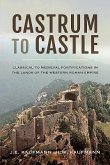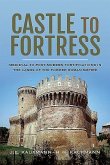The fortifications of the inner German border comprised a complex system of interlocking fortifications and security zones over 1,300 kilometres (810 mi) long and several kilometres deep. The outer fences and walls were the most familiar and visible aspect of the system for Western visitors to the border zone, but they were merely the final obstacle for a would-be escapee from East Germany. The complexity of the border system increased steadily until it reached its full extent in the early 1980s. The following description and the accompanying diagram describe the border as it was around 1980. Travelling notionally from east to west, an escapee would first reach the edge of the restricted zone (Sperrzone), a closely controlled strip of land 5 kilometres (3.1 mi) wide, running parallel with the border. Evading the patrols and watchful inhabitants of the Sperrzone, the escapee would have reached the first of the border fences. The signal fence (Signalzaun), around 500 to 1,000 metres (1,600 to 3,300 ft) from the actual border, was lined with low-voltage electrified barbed wire which activated alarms when touched or cut. Beyond the signal fence was the "protective strip".
Bitte wählen Sie Ihr Anliegen aus.
Rechnungen
Retourenschein anfordern
Bestellstatus
Storno








